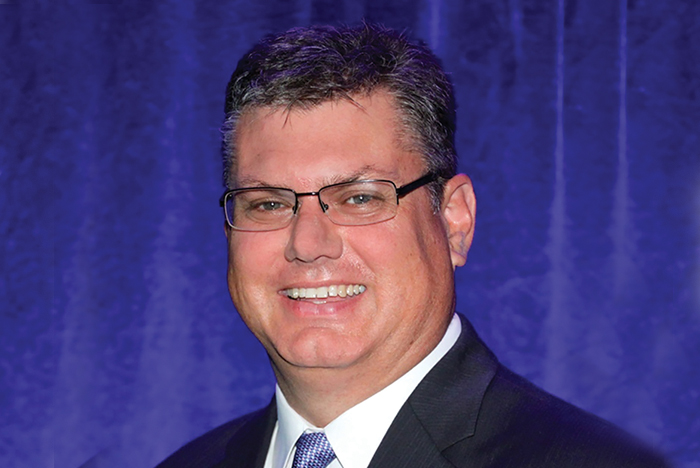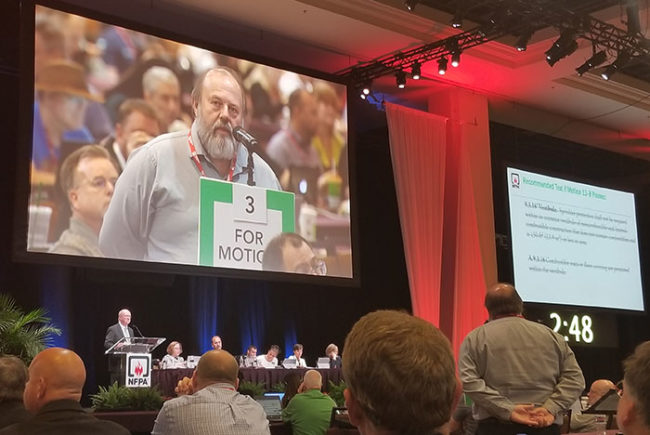
The Horine File
CV
- President and CEO, DNV GL Healthcare
Accomplishments
- Developed a new accreditation model integrating regulatory and management system standards to change the culture of hospital accreditation; achieved deeming authority from the Centers for Medicare & Medicaid Services to become the first accrediting organization for hospitals to be approved by the federal government in more than 40 years
- Has more than 25 years of health care management experience, having held various leadership positions in hospitals and health care organizations
- Successfully led a group of professionals to facilitate effective processes and aspects related to regulatory and accreditation compliance with specific focus in quality/performance improvement, medical staff leadership, credentialing and privileging, medication management, inpatient care, ancillary areas and support services
Education
- Xavier University, Cincinnati, master’s degree in hospital and health administration
- University of Louisville (Ky.), bachelor of science, health occupations education
Discuss DNV GL’s background and how it got started in health care accreditation.
There was a group in the automotive industry that approached us in 2003 about wanting to work with DNV GL to bring a more effective quality-improvement program to hospitals.
At that time, there was no means of holding providers accountable in the same way they held other vendors accountable by requiring them to have an International Organization for Standardization (ISO) 9001 quality management system certification. With the conditions of participation under the Centers for Medicare & Medicaid Services (CMS) already in place, and the Joint Commission as the accreditation organization with much of the market at the time, we knew it would be difficult for hospitals to adopt if they did this separately from their accreditation activities. We had to find a way to tie ISO 9001 together with accreditation requirements to bring to the hospital, and revisit the hospitals annually rather than every three years.
For about five years, we kept pushing forward with the accreditation program, but that wasn’t doing anything to pay the bills and the accreditation didn’t apply under CMS. We continued to push and made a lot of personal sacrifices along the way. Hospitals liked the idea of a new competitor for accreditation, but we knew that getting them to make a change would be a challenge.
We were confident that we could, because hospitals essentially have demanded choice. We just celebrated the 10th anniversary of our CMS approval.
Describe DNV GL Healthcare’s philosophy as an accrediting organization.
For many, accreditation seems to connote a punitive process in which the accrediting body tells them what they are doing wrong, instead of praising the hospital staff for what they are doing right. The accreditation process is about finding noncompliance and taking action to fix whatever the surveyors identify. Hospitals are partners rather than adversaries, and they share ideas and guidance as to how to make improvements. We look at a process from two different perspectives: The first ensures compliance to our accreditation requirements that meet the conditions of participation, and the second looks at how hospitals manage the process in accordance with ISO 9001 requirements. Determining whether the hospital audits its key processes, and assessing whether the processes are consistent and produce the best outcomes, are always top of mind.
The following came from a recent customer-satisfaction survey from one of our hospitals and sums up our philosophy: ‘Well-prepared, very professional, well-informed, highly engaged, extremely respectful, exceeded expectations, very impressed.’
What are some of the strategies DNV GL Healthcare use to help organizations think more proactively about maintaining a culture of safety?
Maintaining a culture of safety requires having an awareness of the surroundings, use of equipment and circumstances that may present a potential risk or hazard. As we require hospitals to implement an effective quality management system by meeting the ISO 9001 requirements, there is an inherent focus on risk-based thinking. We partner with hospitals to collectively assess, tolerate, mitigate or eliminate potential risks. We assess an organization’s own proactive risk-assessment processes and address how to mitigate risk impact. If risks cannot be eliminated, we assess the effectiveness of the controls in place to manage these risks.
What are some major physical environment issues facing organizations?
These days, the big concern is infection prevention. For a hospital to have a good infection-prevention program, the facilities department must be involved. Hospitals are challenged to find contractors who are experienced in a health care or a patient setting. Most contractors are not properly trained in health care construction and the high risks involved with performing construction near immunocompromised patients. Additionally, many hospital facilities departments do not have a strong relationship with infection-prevention personnel.
Another issue for many organizations is not consistently involving or integrating the physical environment-management systems into the overall hospital quality management system. Currently, all life-safety nonconformities must be resolved within 60 days or the hospital will need to obtain a time-limited waiver. Corrective plans need to be validated and hospitals need to reduce recurring deficiencies. This is better facilitated when the physical-environment aspects are part of the quality management system.
What is the Certified Healthcare Operations Professional?
The DNV GL Healthcare Certified Healthcare Operations Professional (CHOP) certification was created to further complement the credentials of physical-environment health care professionals. CHOP certification will include the training and education of the health care operations professional through a three-day course that encompasses numerous aspects of the physical environment taught by physical environment subject-matter experts. This is designed to apply to those individuals with experience and background in the function areas including: ISO 9001 quality management systems, facilities, life-safety management, safety management and related fields.
How much interest has this new certification received and what stage is it in?
In announcing this as a program available through DNV GL Healthcare, there has been incredible interest from our accredited hospitals; many have asked us to provide the course at their facilities so that several staff members could participate. We already have contracts in place on this initiative, because many want to be among the first to receive this training and credential. A more formal announcement will be made in the coming weeks.
Why is DNV GL Healthcare seeking to become an accrediting organization for psychiatric and ambulatory settings?
These programs have been part of our initial strategy as they are consistent with the hospital line for accreditation.
First, regarding psychiatric hospitals, there is a need for another CMS-approved accrediting organization to offer more choice. Many psychiatric hospitals and systems have asked, and others have demanded, that we move forward with this program. Our application to CMS is in process, and we are hoping for approval this year. With respect to ambulatory surgery centers, we are seeking this accreditation as it is in line with our strategy within the hospital-line programs. Regarding programs like home care, hospice, and medical equipment, prosthetics, orthotics and supplies, we have partnered with organizations like the Accreditation Commission for Health Care with approaches consistent with ours.
We are now experiencing significant growth. It will be imperative for us to continue developing programs like these to continue meeting the needs and desires of the market.
Jamie Morgan is associate editor of Health Facilities Management.




